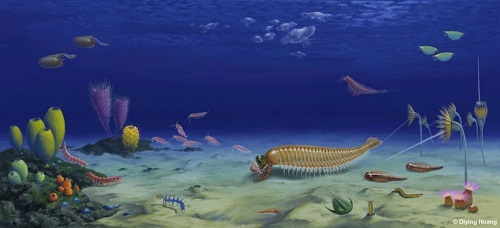The discovery of a shrimp-like fossil with five eyes named Kylinxia from the Chengjiang fauna in Yunnan (southwest China) provides important insights into the early evolutionary history of arthropods. The study was conducted by scientists from Nanjing Institute of Geology and Palaeontology, Chinese Academy of Sciences (NIGPAS), and the results were published in Nature on November 4, 2020.
Kylinxia is a very rare chimeric species. It has a body showing distinctive features of true arthropods, such as a hardened cuticle, a segmented trunk and jointed legs. However, Kylinxia also integrates the morphological characters present in ancestral forms, which include the bizarre five eyes as in Opabinia, as well as the iconic raptorial appendages as in Anomalocaris.
Kylinxia represents a crucial transitional fossil predicted by Darwin’s evolutionary theory. It bridges the evolutionary gap from Anomalocaris to true arthropods and forms a key ‘missing link’ in the origin of arthropods, contributing a strong fossil evidence for the evolutionary theory of life.
Reference: Zeng, H., Zhao, F., Niu, K., Zhu, M., Huang, D., 2020. An early Cambrian euarthropod with radiodont-like raptorial appendages. Nature, https://doi.org/10.1038/s41586-020-2883-7.

Ecological restoration of Kylinxia (guided by Huang Diying, drawing by Sun Jie)
Download:
